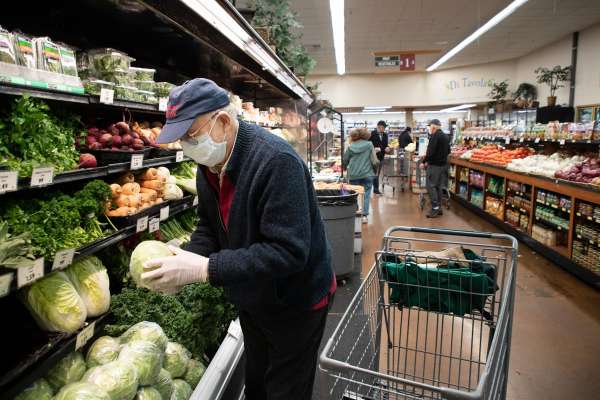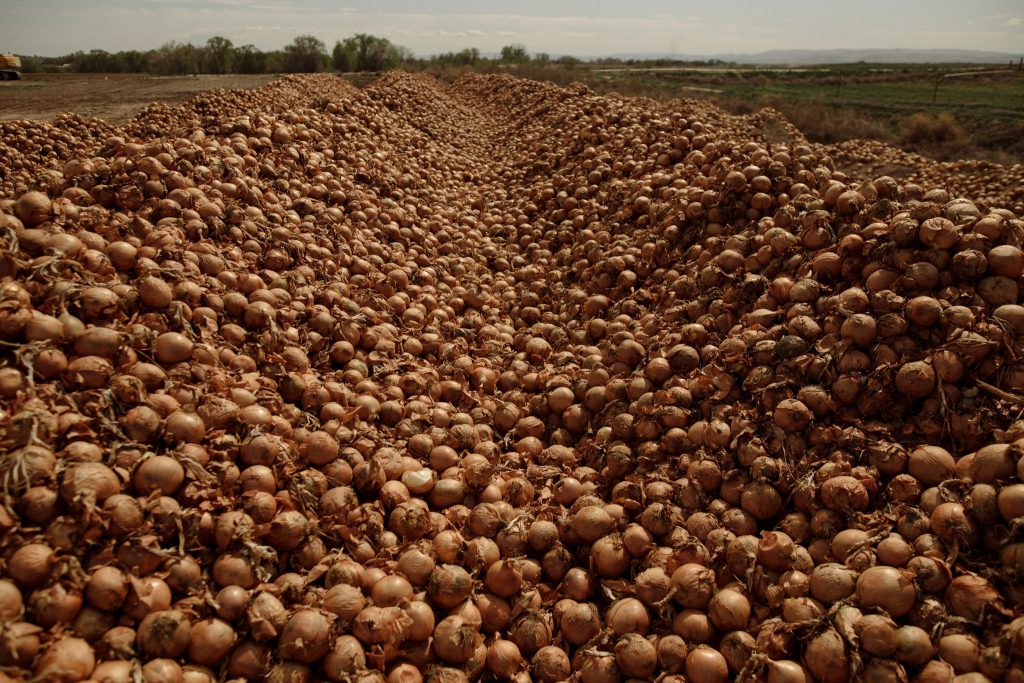By Adam Behsudi and Ryan McCrimmon
The coronavirus pandemic is leading the food industry and regulators to change policies as they grapple with empty shelves, a glut of fresh produce and milk, and sudden shifts in consumer buying habits.
The problem isn’t a shortage of food and commodities. If anything, food waste is becoming a bigger issue as traditionally big, bulk buyers — like college dorms and restaurant chains — suddenly stop receiving deliveries. As a result, millions of gallons of milk are being dumped, and farmers have no alternative but to turn fresh vegetables into mulch.
Federal agencies are scrambling to keep up with the altering landscape by easing rules governing trucking, imports, agricultural visas and labeling requirements for restaurants and manufacturers.
“The way a client described it is they’re seeing a tsunami of demand shift from foodservice to food retail,” said Bahige El-Rayes, a partner who co-leads the consumer and retail practice at Kearney, a consulting firm. “If you’re a manufacturer today of food, it’s basically how do you adapt? How do you actually take what you sent to restaurants then sell it now to retail?”
New alliances are being formed as demand from restaurants dry up and consumers look for new ways of delivery. Kroger, the largest U.S. supermarket chain, has partnered with foodservice giants Sysco and U.S. Foods, which normally supply the restaurant industry and large institutions, to share labor and keep store shelves stocked.
The partnerships offer employment to foodservice workers that would otherwise be furloughed or laid off as a result of a near shutdown of the restaurant sector. It also provides much needed manpower to the overwhelmed food retail industry.
Rewiring the U.S. food network, however, comes with logistical headaches.
“Since we’re buying more at the grocery store, it means [food items] have to be in that form,” said Pat Westhoff, director of the University of Missouri’s Food and Agricultural Policy Research Institute. “We have a bunch of stuff that’s still stuck with restaurants, and they’re trying to decide what to do with it at this point.”
Farmers are also scrambling to recalibrate their production.
Richard Guebert Jr., Illinois Farm Bureau president, said his state’s meatpacking companies have fewer employees showing up because of concerns of being too close to other workers.
“The industry is backing up on bacon and other products that they put together as cut-outs, so they’re slowing down and not doing the volume that they had,” Guebert said.
“There’s a concern for pork producers because they just can’t turn their buildings on or off like you can an assembly line,” he added. From the time sows give birth to slaughter, “it’s a nine-month process that started nine months ago. Pigs continue to be born every day, whether they keep the whole capacity.”
In the meantime, major food distributors including U.S. Foods and Performance Food Group are begging the Treasury Department to prioritize loan applications from their sector as companies shift operations to supply retailers.
“This kind of transition, even if temporary, takes time and investment as we adjust our warehousing, logistics and purchasing processes to meet a consumer-facing market,” they wrote in a letter to the Trump administration.
A group of food worker associations also made an appeal to congressional leaders that any future aid package should “include support for America’s essential critical industry workers” through tax exemptions or direct payments.
In the U.S., an excess supply of food production is forcing some sectors to take extreme measures and ask for extra creative solutions from the government.
“Clearly we’re in a time of crisis,” said Gordon Speirs, owner of Shiloh Dairy in Brillion, Wis. “We’ve lost 25 percent of our income just through the crashed market. Now we face the reality of having to dump milk on top of that.”
John Umhoefer, executive director of the Wisconsin Cheese Makers Association, said the foodservice sector accounts for half of all cheese sold in the U.S., while only one-third is sold at grocery stores. Without that critical market, milk producers need the government to “immediately begin to purchase dairy products” and distribute them to food pantries and school feeding programs, he said.
Westhoff, of the University of Missouri, said the drop in restaurant dining will eventually hamper demand for high-end meat products like steaks.
“Even though we have a short-run rush to the grocery store that gave us a run-up in prices very temporarily, we don’t think that’s going to last very long,” he said.
The radical change in the age of the pandemic is a seismic shift for the food industry. In 2018, Americans spent more on food from full-service and fast-food restaurants — about $678 billion — compared to the roughly $627 billion spent at grocery stores and warehouse clubs, according to USDA data. Spending on food away from home is even higher when counting meals at schools, colleges, sporting events and other entertainment venues.
Now, the National Restaurant Association expects the industry will shed $225 billion over the next few months, along with some 5-7 million jobs.
“Grocery stores just aren’t set up to restock shelves to meet that kind of demand,” said Joseph Glauber, a senior research fellow at the International Food Policy Research Institute.
For the most part, food analysts say consumers don’t need to worry about other countries that are putting in place export restrictions on food and agricultural goods. Vietnam, the third-largest exporter of rice, has temporarily suspended exports of the grain. Russia, Ukraine and Kazakhstan, major wheat producers, have capped exports of the commodity.
“The signs are all disturbing on the foreign side, but if you look at all the actions taken they don’t seem at least yet to have very big ramifications,” said Glauber, who previously served as chief economist for the Agriculture Department.
So far, the U.S. appears to have faced fewer hurdles to transporting food and farm goods than other countries. Border checks across Europe, for example, have snarled trucking and at one point backed up traffic as far as 50 miles.
The European Union has tried to ease the congestions by opening so-called green lanes for trucks carrying farm goods. U.S. highway regulators, for their part, have lifted driving hour limits for essential products including “food for emergency restocking of stores.”
Some governments have asked their citizens to help pick fruits and vegetables and considered designating special planes and buses to transport workers from Eastern Europe to farmlands in the West.
Andrew Walmsley, director of congressional relations for the American Farm Bureau Federation, said there haven’t been widespread transport disruptions yet. But he said flexibility on trucking rules could be crucial over the long term if there’s an eventual shortage of drivers, to ensure “that those who are healthy can continue to move products as safely as possible for as long as possible.”
In the U.S., strict border controls have disrupted farmers’ access to migrant labor, exacerbating what was already a massive problem for the industry, with harvesting right around the corner for some sectors.
If produce is stuck decaying in fields in the coming months, it could potentially drive up retail prices and cause shortages at grocery stores.
Meanwhile, the lack of commercial flights is also crushing the capacity to bring in perishable foods, like berries from South America, which often hitch a ride in the belly of passenger planes.
“Anytime you go to the grocery store in the winter, you see that most of the fresh fruit and vegetable is not coming from the U.S.,” said Peter Friedmann, executive director of the Agriculture Transportation Coalition. “This continues year-round. A lot of the processed foods, canned food, etc. are imported.”
Jim Alderman, a vegetable farmer in Palm Beach County, Fla., said the lack of big buyers has cut off growers in his area from critical buyers including cruise lines and Disney World.
He started dumping his tomatoes. Nearby farmers are doing the same with zucchini and yellow squash, which now fetches market prices far below the cost of picking and packing.
“They’re cutting their squash every day and throwing it on the ground, hoping the market will turn around,” Alderman said.
Link to article in Politico








